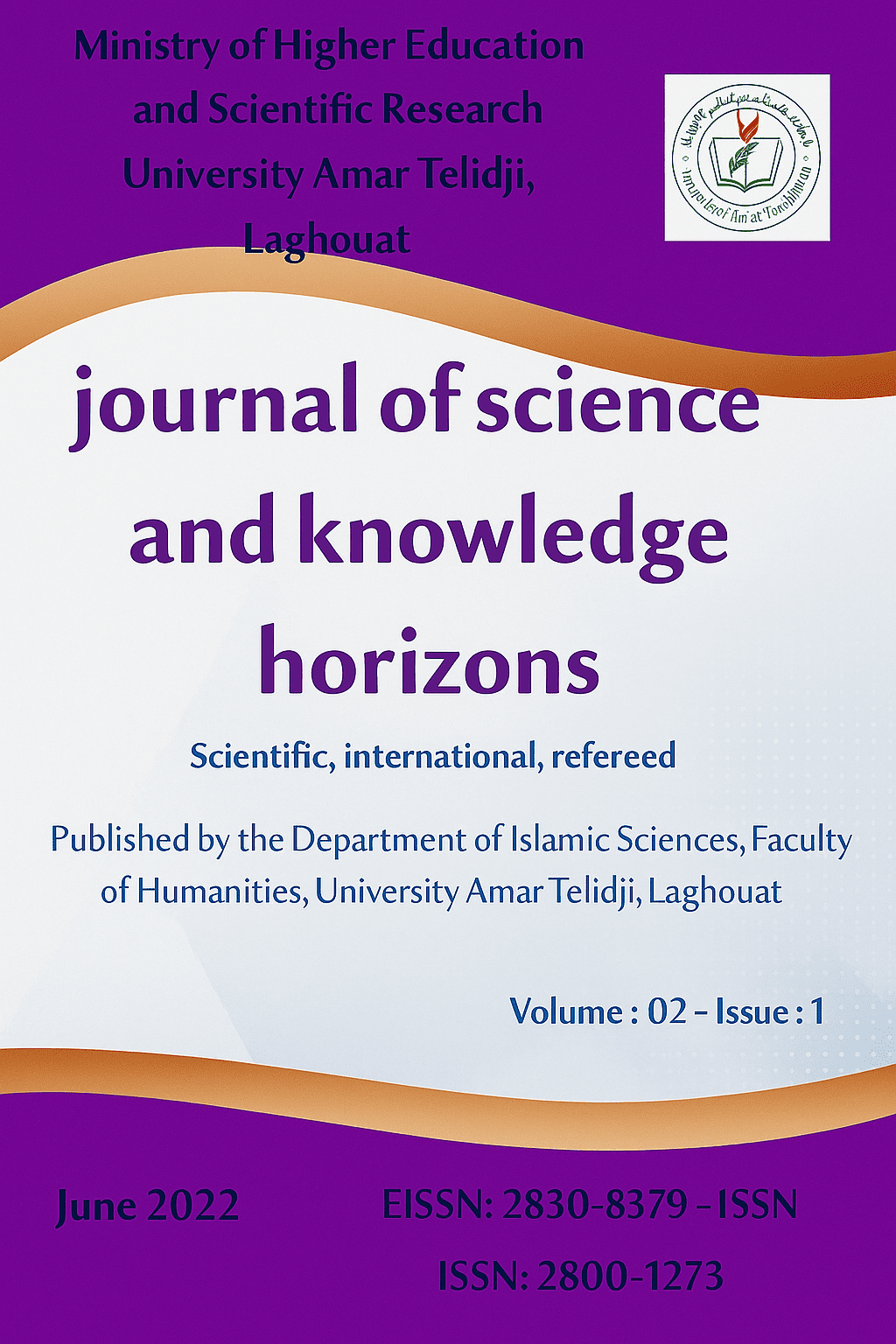Al-Solan or Al-Sawal in Moroccan Al-Melhoun poetry
Abstract
This article talks about the topic of Solan or Al-Sawal in Moroccan Al-Melhoun poetry. It is a set of poetic debates contained in Moroccan Al-Melhoun poetry, which takes place between a poet and his councils or between two or more poets to show ingenuity, scientific capacity and abundance of knowledge.They can also be puzzles that the poet reviews for some his opponents to make them unable to understand and answer, and thereby overcoming them in public. Moreover, this manifests that the poet of Almalhoun can take esotric knowledge from scholars and put it in plain words to the public, breaking the cultural hierarchy and linking the Moroccan cultural groups. Yet, the Question can be used in the Almalhoun poetry to rearrange priorities,mainly cultural, or it can come in a fantastic form.
Downloads
References
- Ibn Manzoor, Jamal Al-Din, Lisan Al-Arab, Beyrouth, Dar Sader, (Dr T).
- Emaar, Abdel Aziz, Al-Malhoun Oral Poetry, Zakira Mughna, parmi :
Sobhi Boustani, Karam Rizk, Joseph Chraim (dir.), Traditions poétiques et récits arabes, Liban, Kaslik, Univ. Saint-Esprit, 2016.
- Al-Toumi Saidan, Diwan du nourrisseur d'âmes et de l'amuseur de fantômes, Algérie, Ammar Qarfi Press, ed.1, (Dr. T).
- Al-Jarari, Abbas, Al-Zajal au Maroc (Le Poème), Rabat, Al-Omnia Press, 1970.
Al-Jarari, Abbas, Le dictionnaire des termes techniques de Malhoun, Maroc, Fadalah Press, 1978.
Abdel Nasser, Hassan Mohamed, Théorie de la réception entre pian et Ezer, Le Caire, Dar Al-Nahda Al-Arabiya, 2002.
- Al-Fassi, Muhammad, Le Maître Malhoun, s.1 c.1, Rabat, Publications de l'Académie du Royaume du Maroc, 1986.
- Al-Fassi, Muhammad, Le Maître du Malhoun, Traductions des Poètes du Malhoun, Rabat, Publications de l'Académie du Royaume du Maroc, 1992.
Hamdani, Hamid, Lire et générer du sens, Changer nos habitudes de lecture du texte littéraire, Beyrouth-Liban, Casablanca-Maroc, Centre Culturel Arabe, 2007.
- Weld Arzine, Mohamed Ben Ali, Cour de Mohamed Ben Ali Weld Arzine, Rabat, Publications de l'Académie du Royaume du Maroc, 2009.
- Paul Zumthor, Introduction à la Poésie orale, éd. Seuil, Coll. Poétique, Paris, 1983.

This work is licensed under a Creative Commons Attribution-NonCommercial 4.0 International License.






